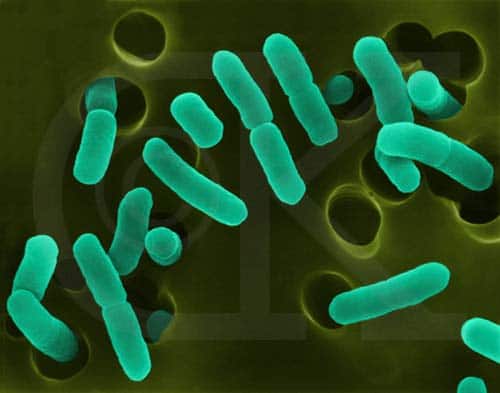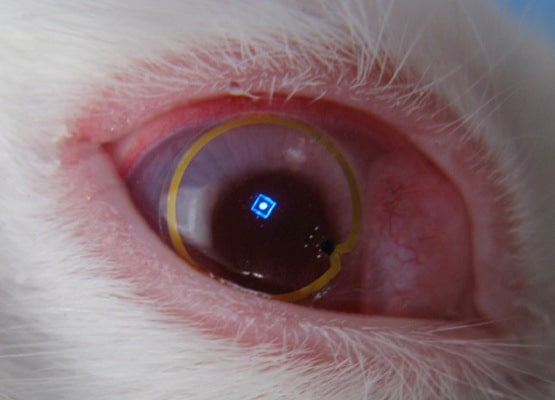
On the medical side of light for a change – up in Houghton, Michigan, scientists at Michigan Technical University have developed a way to make the E. coli bacteria glow like little indigo lightbulbs under ultraviolet light. Apparently the E. coli bacteria really likes the sugar mannose, and just can’t get enough. Scientists at MTU added some manose molecules to a specially-engineered fluorescent polymer, and then mixed it into some water where E. coli was having a party. The little cilia on the E. coli bacteria hooked onto the mannose like a used dryer sheet in the winter in Colorado (that’s a static electricity joke) and coated the bacteria with the fluorescing polymer. BAM – glowing E. coli.
This technology is
Scientists at Michigan Technological University developed a method to make the E. coli bacteria glow under UV light. The researchers believe that the technique of attaching a mannose sugar molecule selectively to pathogens can lead to a clinical method of pinpointing bacterial and maybe even tumor clusters.
From the Michigan Tech press release:
The researchers’ trick takes advantage of E. coli’s affinity for the sugar mannose. Liu’s team attached mannose molecules to specially engineered fluorescent polymers and stirred them into a container of water swimming with E. coli. Microscopic hairs on the bacteria, called pili, hooked onto the mannose molecules like Velcro, effectively coating the bacteria with the polymers.Then the researchers shined white light onto E. coli colonies growing in the solution. The bugs lit up like blue fireflies. “They became very colorful and easy to see under a microscope,” said Liu.
The technique could be adapted to identify a wide array of pathogens by mixing and matching from a library of different sugars and polymers that fluoresce different colors under different frequencies of light. If blue means E. coli, fuchsia could one day mean influenza.
With funding from a Small Business Innovation Research grant from the National Institutes of Health, Liu is adapting the technique to combat breast cancer. Instead of mannose, he plans to link the fluorescent polymers to a peptide that homes in on cancer cells.
Once introduced to the vascular system, the polymers would travel through the body and stick to tumor cells. Then, illuminated by a type of infrared light that shines through human tissue, the polymers would glow, providing a beacon to pinpoint the location of the malignant cells.
If you’re so inclined, check out the abstract here.

Thanks, MedGadget!




